When your engine oil Mixes with coolant , it’s a serious problem. These two fluids serve very different functions and should never be combined. Coolant helps keep your engine from overheating, while oil keeps parts lubricated and moving smoothly. If you found Oil in Coolant , it can quickly harm your engine, leading to costly repairs or even total engine failure. So, if you suspect this issue, addressing it right away is crucial. Here’s a closer look at why oil and coolant sometimes mix, how it impacts your car, and what you can do to fix it.
How Coolant and Oil Work in Your Engine
Oil and coolant are critical for keeping your engine running smoothly and safely. Here’s how each one works:
- Oil’s Role: Engine oil coats and lubricates moving parts, helping them slide easily without excessive friction. It reduces heat, wear, and the risk of parts grinding against each other.
- Coolant’s Purpose: Coolant flows through your engine and absorbs heat, transferring it away from vital engine parts. This prevents the engine from overheating and ensures everything stays at an optimal temperature.
Why Oil and Coolant Shouldn’t Mix
Oil and coolant operate within separate systems inside the engine. The head gasket and other seals help keep them apart. When these seals are intact, the engine can run smoothly. However, if there’s a crack, break, or damage to the gasket or seals, oil and coolant can begin to mix, causing immediate problems.
How Oil and Coolant End Up Mixing
If there’s oil in your coolant, there’s likely damage to one or more of your engine’s seals. Here’s how it usually happens:
- Blown Head Gasket: The head gasket acts as a barrier between the oil and coolant passages in your engine. When it fails, these fluids can start leaking into each other’s systems.
- Overheated Engine: High engine temperatures can damage the gasket or even crack the cylinder head, which can allow oil and coolant to mix.
- Engine Block or Cylinder Head Damage: damaged in an accident, or if there’s significant wear, the engine block or cylinder head could crack, leading to oil and coolant mixing. This type of damage is more severe and typically requires a professional mechanic to address.
Understanding Coolant and Oil Mixing
When you see coolant and oil mixing in your car, it can mean serious trouble. Your car needs these fluids to stay separate to run smoothly and avoid overheating. Coolant keeps your engine from getting too hot, while oil keeps all moving parts lubricated, so they don’t wear down. But sometimes, these fluids can end up mixed together, causing big problems for your engine.
Why Do Coolant and Oil Mix?
Usually, coolant and oil mix because of a broken or damaged gasket. Think of gaskets as seals that keep these fluids in their own channels. The head gasket, for example, separates the coolant from the oil. If it cracks or fails, coolant can leak into the oil, or oil into the coolant, depending on where the break happens.
Here are some common reasons why coolant and oil might mix:
- Blown Head Gasket: This gasket separates oil and coolant. When it’s broken, fluids leak and mix.
- Overheating: If your engine overheats, it can damage the head gasket or even crack the cylinder head. Once these parts are damaged, fluid can leak between channels.
- Physical Damage: Accidents can crack the engine block or cylinder head, which also allows coolant and oil to mix.
A simple rule to remember is: If you see coolant in your oil or oil in your coolant, something is leaking.
Is Coolant in Oil Dangerous?
Yes, it’s very dangerous for your engine. Oil and coolant each have important jobs, but they can’t do those jobs when mixed. Here’s why:
- Oil is a Lubricant: It keeps moving parts from grinding and wearing each other out.
- Coolant Regulates Temperature: It keeps your engine from overheating by absorbing and releasing heat.
When coolant mixes with oil, the oil can’t lubricate well, and the coolant can’t regulate temperature. This can lead to serious damage because the engine parts get too hot and start breaking down from friction.
Why Oil in Coolant (or Vice Versa) is Dangerous
The Problem with Oil-Coolant Mixing
When oil and coolant mix in an engine, it’s a sign of a serious problem. Both are essential fluids that keep your engine running smoothly, but they should remain separate. Oil helps to lubricate the engine’s parts and prevent friction, while coolant keeps temperatures in check by reducing heat. However, when they combine, these fluids no longer work the way they’re supposed to. This can lead to severe damage that’s expensive to fix and could even leave you stranded.
Can I drive with oil in coolant? What Happens When You Drive with Mixed Fluids?
Driving with a coolant-oil mixture causes:
- Overheating: Without proper coolant flow, your engine’s temperature will spike, increasing the risk of overheating and serious damage.
- Engine Damage: The combination of coolant and oil accelerates engine wear. Moving parts may grind, stick, or even seize due to the lack of lubrication.
Pro Tip: If you notice a milky or frothy substance in your oil, it’s a clear sign of coolant contamination. This should be addressed immediately to prevent further damage.
How Mixed Fluids Harm Your Engine
When coolant enters the oil or vice versa, neither fluid can perform its job correctly. Here’s why that’s dangerous:
- Reduced Lubrication: Oil is responsible for lubricating moving parts like pistons, crankshafts, and bearings. With coolant in the oil, this lubrication breaks down, increasing friction. Friction, in turn, wears out engine components faster, and if left unchecked, it can lead to total engine failure.
- Overheating Risk: Coolant’s main role is to regulate engine temperature, preventing overheating. When oil mixes with the coolant, it thickens the coolant and reduces its effectiveness. As a result, the engine may run hotter than usual, causing overheating and risking severe internal damage.
- Corrosion and Build-up: Oil-coolant mixtures create a sludge-like substance that’s harmful to the engine. This sludge can clog internal passages, causing reduced coolant flow and corrosion. The presence of this build-up can create costly problems, as it is often difficult to fully remove even with professional cleaning.
Common Signs of Oil and Coolant Mixing
If you suspect oil and coolant are mixing, there are clear signs to look for:
- Milky or Gravy-Like Substance: When oil and coolant combine, they create a thick, opaque mixture. Checking the radiator cap or the oil dipstick may reveal this substance, which is a telltale sign.
- Overheating Engine: An engine that overheats frequently may have a coolant flow issue caused by a mixture with oil. Overheating can also lead to engine warping or even total breakdown if not addressed quickly.
- White Smoke from the Exhaust: White smoke is often a sign of coolant leaking into areas where it shouldn’t be. This could mean there’s a head gasket issue, which is one of the main reasons for coolant and oil mixing.
Expert Insight: The Hidden Costs of Ignoring the Problem
Ignoring oil-coolant mixing can lead to costly engine repairs. Here are some of the possible repairs you might face:
- Head Gasket Replacement: This is one of the most common causes of fluid mixing. A blown head gasket is expensive to replace, as it requires removing and replacing parts of the engine.
- Engine Block Replacement: If the engine block is cracked, the damage is likely severe. Replacing an engine block can cost thousands of dollars, and sometimes it’s cheaper to replace the entire engine.
- Cleaning the Cooling System: Even after the main repair, removing sludge build-up from mixed oil and coolant is difficult and time-consuming. This cleaning process can drive up the overall repair cost.
How to Avoid This Issue
The best way to prevent oil and coolant from mixing is with regular engine maintenance. Here’s how:
- Check Your Fluids Regularly: Look at your oil dipstick and coolant tank for any signs of mixing.
- Keep an Eye on Temperature Gauges: If your engine starts overheating, address it immediately.
- Use Quality Fluids and Additives: Quality additives can help prevent leaks by reinforcing the seals and gaskets in your engine.
By staying vigilant, you can often catch small issues before they become big problems.
Signs of Coolant Mixing with Oil
One of the first signs that oil and coolant might be mixing is a change in appearance of the fluids themselves. Coolant and oil are designed to do different jobs and work in separate systems. But if something causes them to leak into each other, you may notice certain tell-tale signs that something is off.
Visual Signs of Contamination
- Milky or Gravy-like Fluid:
- When oil mixes with coolant, it usually creates a thick, milky, or even gravy-like texture. This mix can form inside the coolant reservoir or show up on the oil dipstick.
- Check your coolant regularly. If the liquid looks cloudy or you see a layer of sludge on top, this could be the first sign that the two fluids are combining.
- Oil Dipstick Check:
- Checking your oil dipstick can provide another clue. Pull out the dipstick and look at the oil on it. If you see a creamy or frothy texture, that’s usually oil contaminated by coolant.
- Pro Tip: Don’t just rely on visual checks. If the engine has been running, let it cool down before checking these fluids to get a more accurate reading. Also, hot engine parts can cause burns if you’re not careful.
Performance Symptoms of Mixed Coolant and Oil
Oil and coolant mixing doesn’t just change how the fluids look. It also affects how your car drives. When these fluids mix, you may notice some other performance issues with your engine.
- Overheating Engine:
- One of the most immediate signs of a coolant and oil mix is engine overheating. Since coolant is meant to regulate your engine’s temperature, contaminated coolant can’t do its job well, leading to rapid overheating.
- An overheating engine is dangerous. It can cause more damage to other engine parts if ignored, so always stop and check your vehicle if you see the temperature gauge spike.
- Loss of Engine Power:
- Oil is essential for reducing friction in the engine. When it mixes with coolant, it loses its lubricating qualities, which can lead to poor engine performance. You may feel a loss of power, notice slow acceleration, or even hear strange knocking sounds from under the hood.
Smell and Smoke Indicators
Sometimes, you’ll notice changes that you can smell or even see coming from the exhaust.
- Sweet Smell in the Cabin or Around the Car:
- Coolant has a distinct sweet smell, and if it leaks into the oil, that smell may come through your car’s vents.
- This smell is a clear warning to check for any leaks or contamination in your fluids.
- Exhaust Smoke:
- White or blue smoke from the exhaust is another strong sign that oil and coolant are mixing. White smoke can mean coolant is burning in the combustion chamber, while blue smoke can indicate oil is leaking in as well. Either color of smoke means it’s time to check under the hood and see what’s going on.
Quick Reference: Signs of Coolant and Oil Mixing
Here’s a simple list to quickly identify the issue:
- Milky substance in the coolant reservoir or on the oil dipstick
- Engine overheating quickly or running hot
- Loss of power and slow acceleration
- Sweet smell in the car or around the engine
- White or blue smoke from the exhaust
Detecting these signs early can prevent more severe engine damage and costly repairs. If you notice any of these symptoms, it’s time to inspect your car’s fluids and contact a mechanic if the problem seems serious.
How to Fix Oil in Coolant or Coolant in Oil
When coolant mixes with oil in your engine, it’s a problem that needs a fast response. While the mix might look like a thick, milky substance, the real concern lies in how it harms your car. Here, we’ll explain how to fix this problem step by step and share expert advice on when to seek a mechanic’s help.
1. Identifying the Issue
Start by checking the coolant reservoir and oil dipstick:
- Coolant Reservoir: A thick, milky substance in the coolant reservoir often means oil and coolant have mixed.
- Oil Dipstick: Pull out the dipstick, and if you see a brownish or milky liquid, this is a sign of coolant contamination in your oil.
👉 Tip: Coolant in oil (or vice versa) often means a gasket failure, which may need a more intensive fix than DIY solutions.
2. Initial Fix: Flushing the Contaminated Fluid
Flushing the reservoir and changing out the contaminated fluids will temporarily reduce damage. Here’s how:
- Step 1: Drain the coolant and oil from your engine to remove as much of the contaminated fluid as possible.
- Step 2: Flush the radiator and reservoir with water to clear out any leftover milky fluid.
- Step 3: Refill with clean oil and coolant, following your vehicle’s manual for the right types.
3. Try Adding High-Quality Additives
Adding engine additives can sometimes seal minor leaks and offer short-term relief. Hy-per Lube Oil Supplement and Hy-per Cool Super Coolant are two products commonly recommended for temporary fixes.
- Hy-per Lube Oil Supplement: This product seals minor leaks around pistons and valves. It also helps extend the life of engine oil, giving added protection until you can get a full repair.
- Hy-per Cool Super Coolant: This coolant works with nearly all types of antifreeze and can lower engine temperatures by up to 25°F, helping to prevent overheating from contamination.
Note: While these additives can be a temporary fix, they are unlikely to solve a severe leak or damaged gasket. If the coolant and oil mix continues, move to the next step.
4. When to Visit a Mechanic
If flushing the fluids and adding sealants doesn’t solve the problem, it’s time to see a mechanic. Persistent mixing of coolant and oil could mean a blown head gasket, cracked cylinder head, or even a damaged engine block. Here’s what to expect when you go in:
- Gasket Repair: Replacing a head gasket is a common fix but requires specialized tools and skills, so it’s not a DIY job for most people.
- Cylinder Head Inspection: Mechanics may need to remove the cylinder head to check for cracks. Cracks here are rare but could lead to coolant and oil mixing.
- Engine Block Replacement: In extreme cases, a cracked engine block will need full replacement. This is a high-cost repair but is usually avoidable if you catch the problem early.
5. Expert Advice: Prevention and Long-Term Solutions
To keep your engine running well and avoid coolant-oil issues, routine maintenance is essential. Here are some tips from professionals:
- Inspect the Oil and Coolant Regularly: Checking these fluids every month can catch any early signs of contamination.
- Don’t Skip Coolant and Oil Changes: Clean fluids last longer and reduce the risk of overheating, which can damage gaskets.
- Use High-Quality Fluids and Additives: Investing in top-grade oil and coolant protects engine parts and helps prevent leaks.
If your car shows signs of coolant and oil mixing, act fast. Flushing the system, using additives, and seeking help from a mechanic can prevent further damage. Remember, this isn’t just about keeping the car on the road; it’s about protecting your engine’s health for the long haul.
Here’s a comprehensive and easily understandable section on “Cost of Repairing Coolant and Oil Mixing Issues” in Markdown format. I’ll include features such as lists, bold text, headings, HTML for tables, and bullet points to enhance readability, along with transitions and straightforward language.
Cost of Repairing Coolant and Oil Mixing Issues
When oil and coolant mix, repairing the issue can range from a quick fix to a major repair. It all depends on how severe the damage is. Here’s a breakdown of what you might expect when facing these repairs.
1. Temporary Solutions: Low-Cost Options
If you catch the problem early, you might only need to spend money on replacement fluids and a few additives. Here’s what you might need for a temporary fix:
- Coolant and Oil Flush: Draining and replacing contaminated coolant and oil usually costs $50 to $100 if you do it yourself.
- Quality Additives: Products like Hy-per Lube Oil Supplement or Hy-per Cool Super Coolant can help reduce leaks and improve performance. These products typically cost $10 to $20 each.
Key Point: This temporary fix works best for minor leaks or contamination. If the damage is severe, these solutions may only be a short-term help.
2. Head Gasket Replacement: Mid-Level Repair Cost
If the head gasket has failed, you’ll likely need to replace it to stop coolant and oil from mixing. This is more complex and requires professional help. Here’s what to expect:
- Parts and Labor Cost: Replacing a head gasket costs $1,200 to $2,500, depending on the make and model of your car. Labor often makes up most of this cost.
- Time Required: Head gasket replacement can take 6-8 hours, so labor charges are high.
Expert Insight: Head gasket failures can happen from engine overheating, which damages the seal. An experienced mechanic will inspect for any underlying issues that might have caused the gasket to fail.
3. Cracked Cylinder Head or Engine Block: High-Cost Repairs
A cracked cylinder head or engine block is a serious issue. These types of cracks can happen from extreme overheating or a collision. Here’s what the repair might involve:
- Cylinder Head Repair/Replacement: Depending on the type and location of the crack, repairs can range from $500 to $1,500. In some cases, it may need a full replacement.
- Engine Block Replacement: If the engine block is cracked, a full replacement may be needed, which can cost between $4,000 and $8,000. This cost covers the engine itself, plus labor and any additional parts.
Cost Comparison Table
To make it easier to understand, here’s a simple table comparing these repair costs:
| Repair Type | Estimated Cost | Description |
|---|---|---|
| Fluid Flush & Additives | $50 – $100 | DIY or basic fix for minor issues |
| Head Gasket Replacement | $1,200 – $2,500 | Moderate repair, professional help needed |
| Cylinder Head Repair | $500 – $1,500 | Requires specific crack repair or replacement |
| Engine Block Replacement | $4,000 – $8,000 | High-cost, last-resort solution |
4. Preventative Measures to Avoid High Repair Costs
Preventing oil and coolant from mixing can save you from these costly repairs. Here’s how:
- Regular Maintenance: Schedule coolant and oil checks every 6 months to spot potential issues early.
- Watch for Overheating: Overheating can damage gaskets and engine parts. Address overheating signs promptly to prevent further problems.
- Use Quality Products: High-quality oils and coolants reduce wear on engine parts, prolonging their lifespan.
Repair costs for coolant and oil mixing issues vary widely. A temporary fix can be affordable, but a major repair, like replacing an engine block, can be costly. Regular maintenance and quality products are your best defenses against expensive repairs.
Certainly, here’s a draft for Section 6: Preventing Oil and Coolant Mixing in the Future using the outlined structure with SEO elements and a simple, highly-readable style.
Preventing Oil and Coolant Mixing in the Future
Oil and coolant should never mix. When they do, it’s often because of a worn-out part or maintenance issue. So, the best way to prevent this is by staying on top of regular checks and using quality products. Let’s break down exactly how to keep oil and coolant separated for a healthier engine.
1. Keep Up with Routine Maintenance
Regular maintenance isn’t just a suggestion; it’s essential. A few simple checks can prevent major problems down the road. Here’s what every car owner should do:
- Check the coolant and oil levels: Low levels in either could be a sign of a leak or engine issue.
- Inspect the oil and coolant quality: Fresh oil should look clear and amber-colored. Coolant should be a vibrant green, orange, or pink, depending on the type. If either looks milky or dirty, it might mean oil and coolant are mixing.
- Monitor the temperature gauge: Overheating can damage seals, leading to leaks between the oil and coolant compartments.
Tip from Experts: Most coolant and oil leaks develop slowly. By catching them early with these regular checks, you could save thousands on repairs.
2. Use High-Quality Parts and Fluids
The quality of your car’s parts and fluids matters. Cheap parts or low-grade oil can wear out faster and may not protect your engine as well. Investing in quality products goes a long way in preventing leaks.
- Choose reputable brands: Engine parts like the head gasket, radiator, and hoses should come from trusted manufacturers.
- Use quality oil and coolant: Not all oils and coolants are the same. Some are better at withstanding high temperatures, reducing wear and tear. Look for options recommended by your vehicle manufacturer.
Using the right products helps keep seals in good condition. Healthy seals mean oil and coolant stay where they belong — in their own systems.
3. Additive Treatments for Extra Protection
Engine additives can offer added protection. They coat engine parts, which helps reduce wear. While they don’t replace regular maintenance, they can be a useful extra layer of security.
Benefits of Oil Additives:
- Reduces engine friction
- Helps maintain oil consistency even in extreme temperatures
- Adds a protective seal around parts to prevent minor leaks
Benefits of Coolant Additives:
- Stabilizes coolant temperature, reducing the risk of overheating
- Prevents corrosion in metal engine parts
- Improves overall coolant efficiency, especially in older engines
Pro Tip: Many car experts recommend additives from trusted brands like Hy-per Lube, which has a proven track record in engine protection. Quality additives can keep your engine running smoothly and help prevent costly repairs.
4. Protecting Your Engine Through Smart Driving
How you drive can affect the health of your engine and reduce wear on parts like the head gasket or engine block.
- Avoid sudden stops and starts: Rapid temperature changes put extra pressure on seals and gaskets.
- Warm up your engine in cold weather: This helps the oil flow smoothly, protecting engine parts and seals.
- Avoid driving while overheating: If you notice your temperature gauge going up, pull over and let your car cool down. Driving with an overheating engine can lead to oil and coolant leaks, or worse, cause permanent engine damage.
Anecdote from Mechanics: Many drivers ignore early warning signs. A little patience can save your engine — and your wallet.
5. Make Use of Diagnostic Tools
Modern cars come with diagnostic systems that can help catch issues early. By staying alert to these signals, you can prevent oil and coolant mixing before it becomes a serious problem.
- Check engine lights: A common warning that often gets ignored. Sometimes, it’s a small issue, but it can also be an early sign of an engine problem.
- Temperature and pressure sensors: If your car starts to overheat or experiences pressure changes, a sensor will alert you. Addressing these signs early can prevent damage to your engine’s seals.
For older cars, portable diagnostic tools can be purchased for a reasonable price and used to detect potential issues.
Final Thoughts: Keep Your Engine Healthy
Preventing oil and coolant from mixing comes down to quality products and routine care. Each check, each quality part, and each drive affects your engine’s life. Make regular maintenance a priority, and your engine will thank you.
Author: Jordan Miles
Jordan Miles – Senior Automotive Editor
Jordan Miles, a journey through the world of automotive marvels. Based in: Minneapolis, Minnesota, USA
About Me
Hello, I’m Jordan Miles! I’ve been in love with the roar of engines and the sleek lines of automotive design since I could remember. With over a decade of experience in automotive journalism, I bring you the latest insights, deep dives into car technology, and spotlight the most exciting trends in the world of automobiles. From the heart of the USA, join me on a journey to discover the cars that set our pulses racing and the future models that promise to revolutionize our roads.
Contact Information
Email: jordan@oilforcar.com
Twitter: https://twitter.com/jordan_mil13743/
Facebook: https://www.facebook.com/miles.jordan.89
Topics of Interest
Electric and Hybrid Innovation
American Muscle Cars
Classic Car Restoration
Future Automotive Technologies
Memberships
Automotive Press Association (APA)
Electric Vehicle Association (EVA)
More About Jordan
Short Bio: A renowned automotive expert and a fixture at auto shows across the country, Jordan brings a blend of technical knowledge and a passion for storytelling. Education: B.S. in Mechanical Engineering, with a focus on Automotive Design from MIT. Qualifications: Certified Automotive Reviewer by the National Auto Critics Association (NACA). Languages: English (Native), Spanish (Fluent) Previous Roles:
Test Driver for Performance Car Magazine
Consultant for Car Restoration TV Shows
Engineer Intern at Tesla Motors
Fun Fact: Once restored a 1967 Shelby GT500 with nothing but a workshop manual and a lot of determination.
Interactive Features
Ask Jordan: Have a burning question about your favorite car? Drop me a line, and let’s talk torque and horsepower.
Jordan’s Quotes: “The perfect car is a fusion of art, technology, and the freedom of the open road.”
Reader’s Corner: Share your thoughts on the latest reviews and join the discussion!
Featured Content
Newest Articles:
The Resurgence of the American Muscle Car
Electric Dreams: How EVs are Charging into the Mainstream
Highlighted Content:
Behind the Wheel: An In-depth Review of the 2024 Mustang
The Evolution of Safety Features in Modern Cars
Recommended Reads:
A Week with the Tesla Roadster: The Future is Now
Under the Hood: The Mechanics of Autonomous Vehicles
Multimedia Spotlight:
Podcast: “Revving Up” – Weekly discussions on car culture and new models
Video Series: “Garage Tours” – A sneak peek into America’s most fascinating car collections
Editorial Team & Collaborations
Frequent Co-authors:
Alex Rivera, our Electric Vehicle Expert
Maria Chen, Classic Car Enthusiast and Columnist
Editorial Staff Overview: A dedicated team bringing you the most accurate and engaging car reviews and news. Editorial Guidelines: Commitment to unbiased reporting and in-depth analysis of automotive models.
Stay Connected
For the latest car reviews, industry insights, and a look at automotive history through the lens of today, keep your engines revving with Jordan Miles at oilforcar.com.

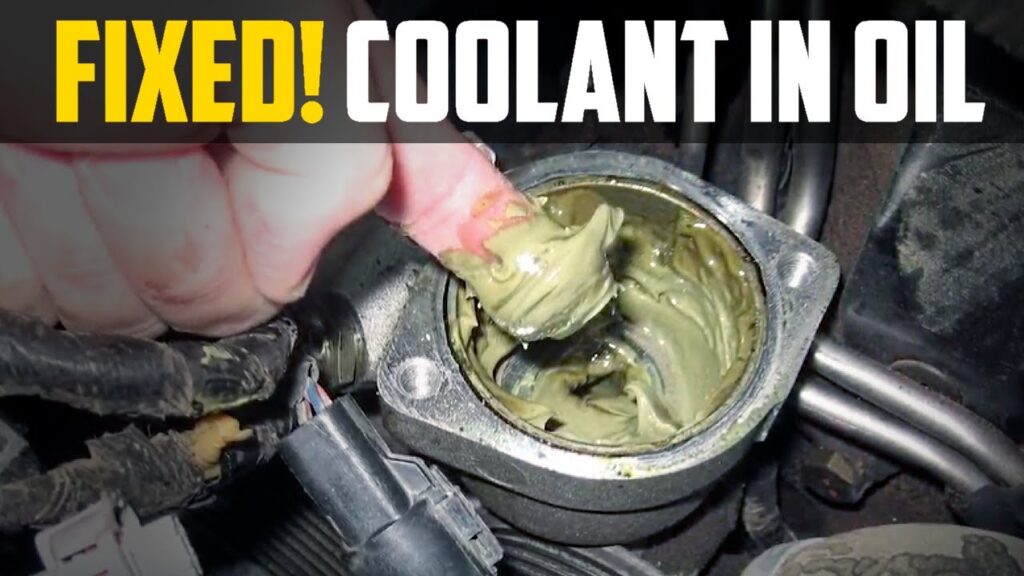
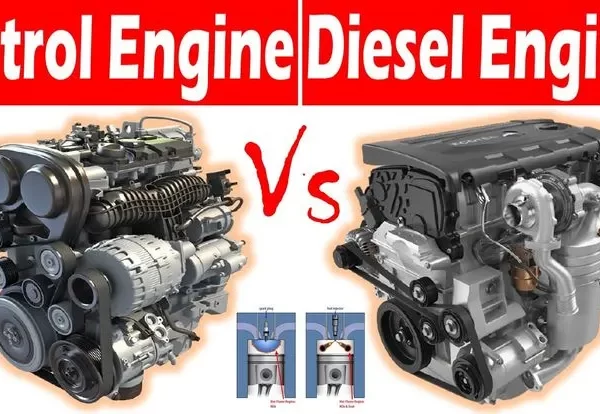
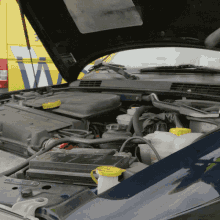
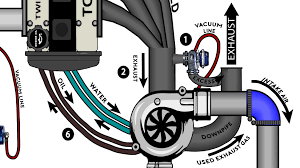
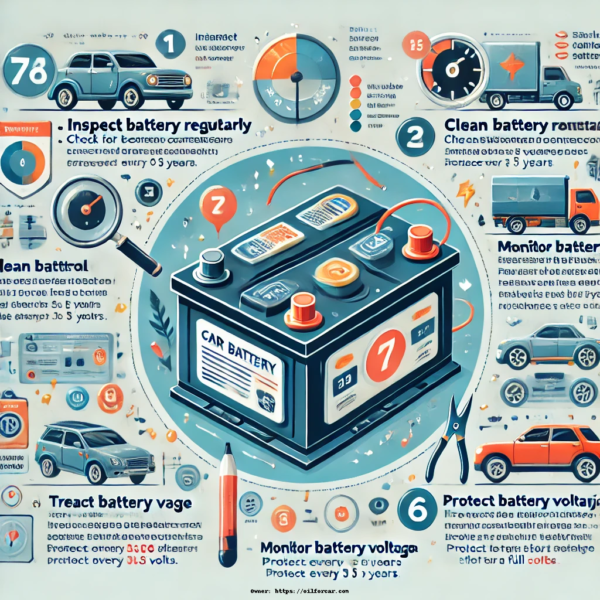
Pingback: Oil in Coolant: What Happens When Coolant Mixes with Oil? - Buying new and used cars online, and read expert Car review